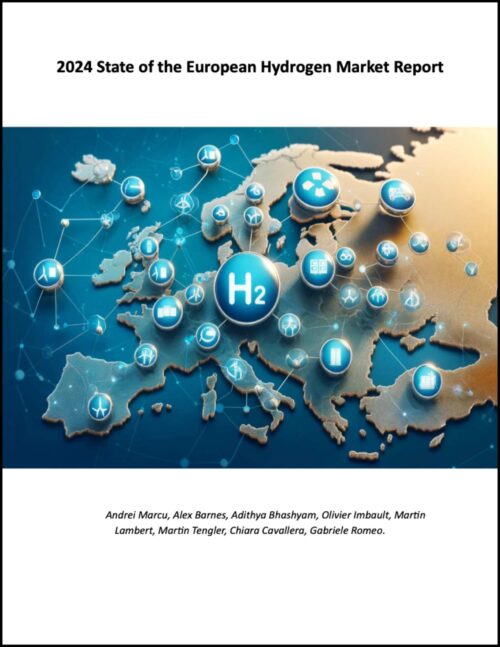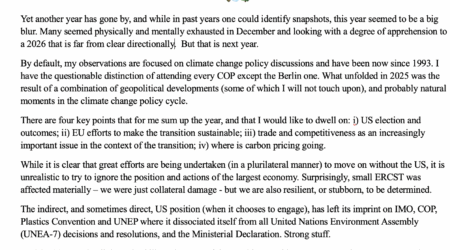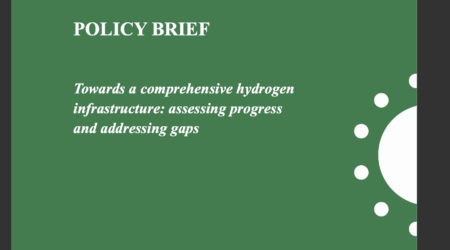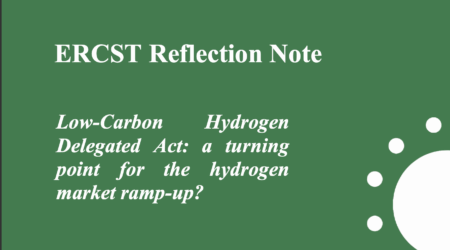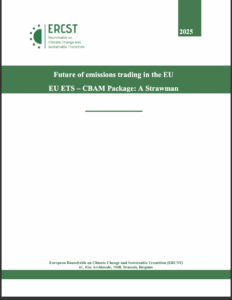2024 State of the European Hydrogen Market Report
Author(s): Andrei Marcu, Alex Barnes, Adithya Bhashyam, Olivier Imbault, Martin Lambert, Martin Tengler, Chiara Cavallera, Gabriele Romeo
Key Takeaways
- Developing a hydrogen economy is one of the critical requirements for the achievement of the 2050 Net Zero target as well as in the consideration of the interim 2040 target.
- Like many of the EU climate policies, hydrogen policy is currently overly regulatory in nature, rather than a more market driven approach with technological neutrality.
- In 2023, important progress has been made in completing the regulatory framework on the low- carbon hydrogen market in the EU and UK. However, some important parts of the policies are still missing, particularly in the EU.
- The EU and UK regulatory approaches are different: (1) the UK is technology neutral, as long as it is sustainable, that is, as long as the hydrogen’s carbon intensity is lower than 20 gCO2e/MJ, while the EU requires technology to be only renewable (in accordance with RED II definition); (2) the UK framework includes a set of implementing acts and a production support approach, while the EU relies on Member State decisions, in particular on implementation of targets and quotas.
- However, it is too early to say which is the winning approach, as the EU and the UK have not made significant progress on the low-carbon hydrogen market deployment in 2023 and it is most unlikely that the EU and UK targets for 2030, in terms of low-carbon hydrogen production, will be achieved.
- The lagging growth of the EU and UK low-carbon hydrogen market has a negative impact on the environmental delivery which remains mainly dependent on changes to current hydrogen production and increased efficiency. This is demonstrated by the very low level of committed supply compared to both announced projects and ambitious targets which have been set.
- European governments have made low to moderate progress on nine key performance indicators (KPIs) for low-carbon hydrogen. More ambitious policy implementation is needed to kickstart a European hydrogen market.
- Government funding and local content requirements in hydrogen projects have shown the most progress. Europe has announced one of the largest budgets for low-carbon hydrogen which is set to lead to more final investment decisions once funding is allocated. However, further work is required to translate that willingness into actual project commitments. Domestic electrolyser manufacturers currently dominate sales to European hydrogen projects, accounting for 80-90% of sales since 2022, far exceeding the Net Zero Industry Act target of 40%. However, the funding seems concentrated in limited number of countries in EU.
- More progress is needed on implementing quotas for hydrogen use and expanding domestic electrolyser manufacturing. EU quotas for hydrogen use could create 2-3.8 million metric tons (Mt) of demand by 2030, far below the REPowerEU target to use 20Mt. The slow implementation of quotas on a national level is creating further uncertainty for project developers, leading to delays in investments.
- Progress on raising domestic supply and demand is lacking as most projects are failing to make it out of planning stages. Just 3.6% of supply planned for commissioning by 2030 is past final investment decision or operational. Only 4.5% of supply needed to meet the REPowerEU demand target has signed a binding offtake agreement. There is not yet sufficient incentive for potential offtakers to commit to purchase quantities of low-carbon hydrogen to support the targets. The end use for much proposed hydrogen supply is unclear.
- Over the next 12 months, key things to look for which could indicate significant progress: (a) how many of the projects which won the first European Hydrogen Bank auction actually progress to FID and start construction, (b) whether significant FIDs are taken on UK low-carbon hydrogen projects (c) how many firm offtake agreements are signed between customers and suppliers.


